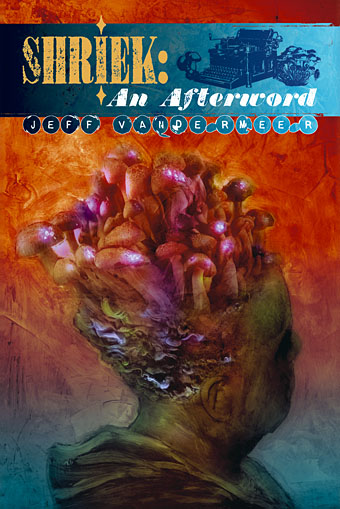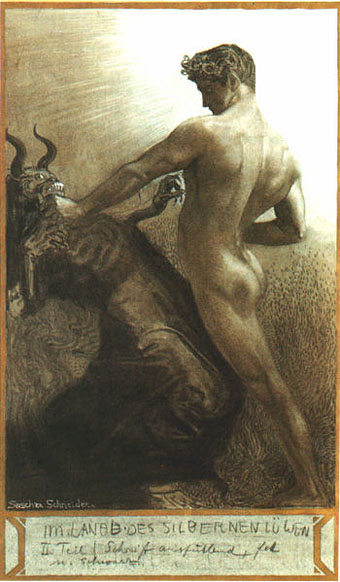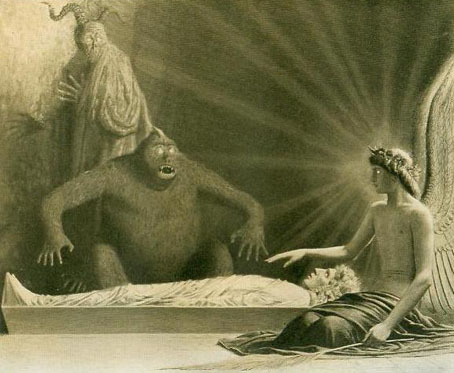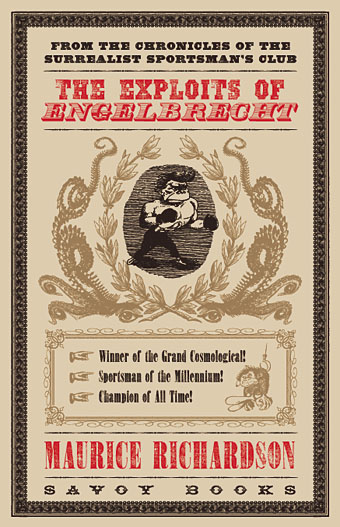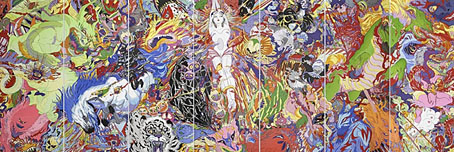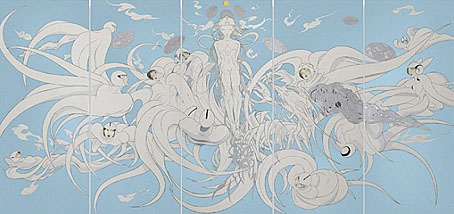Seeing as Jeff VanderMeer and his publisher have made the cover for the new edition of Shriek: An Afterword public, I may as well do the same. The design is mine, the cover painting is by comic artist Ben Templesmith. The design and its integration with the book contents are more evident when you see the complete dust jacket, and the rest of the book, of course. Since these are still being proofed I’ll probably post them after publication. Meanwhile, the book has a reduction of 25% if you order a copy now.
Limited Edition: 500 signed numbered hardcovers
Expected Publication Date: Second quarter 2008“Like some delicious mashup of H.P. Lovecraft, Mervyn Peake, and L. Frank Baum, but with his own verbal dexterity and perverse ingenuity…An affecting narrative about love, art, sibling rivalry, commerce, history, and some really nasty ’shrooms.” The Washington Post Book World
A year’s best selection of The San Francisco Chronicle, The Austin Chronicle, and SF Site, World Fantasy Award winner Jeff VanderMeer’s Shriek: An Afterword is a triumphant return to the author’s imaginary city of Ambergris—the setting of his critically acclaimed, best-selling City of Saints & Madmen.
Shriek: An Afterword relates the scandalous, heartbreaking, and horrifying secret history of two squabbling siblings and their confidantes, protectors, and enemies. Narrated with flamboyant intensity and under increasingly urgent conditions by ex-society figure Janice Shriek, this afterword presents a vivid gallery of characters and events, emphasizing the adventures of Janice’s brother Duncan, a historian obsessed with a doomed love affair and a secret that may kill or transform him; a war between rival publishing houses that will change Ambergris forever; and the gray caps, a marginalized people armed with advanced fungal technologies who have been waiting underground for their chance to mold the future of the city.
Experience the beautifully strange novel that received a starred review in Publishers Weekly and was praised by, among others, Elizabeth Hand, Gene Wolfe, Zoran Zivkovic, Hal Duncan, and Jeffrey Ford.
“Shriek: An Afterword further established Jeff VanderMeer as the finest fantasist of his generation.” The Austin Chronicle
“Five stars! A stunning and very different fantasy novel.” BBC Focus Magazine
“In the telling, Shriek: An Afterword is an exceptional novel, a tapestry of fine writing, deep psychological insight, and acute narrative excitement…. a dark fantasy of tremendous distinction.” Locus
Previously on { feuilleton }
• Shriek: The Movie
• New things for April II
• Jeff on Bldgblog
• An announcement redux
• City of Saints and Madmen

